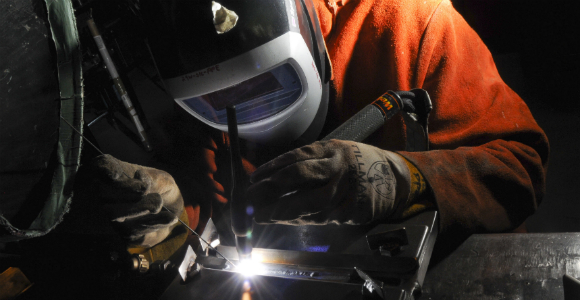
California’s economy is fueled by innovation. Leading global companies such as Google, Disney, and Tesla transformed entire sectors of the economy and created thousands of jobs in our state.
Yet, many Californians face substantial challenges in finding good jobs and supporting themselves and their families in an era of volatile and rapidly evolving labor markets. Too often, they lack the skills, credentials and work experiences they need to obtain high-value jobs.
At the same time, in regions across California, employers in key industries require workforce skills and aptitudes that are in short supply. Without creative, aggressive action, that gap is likely to worsen in the years to come, threatening economic growth and the ability of thousands of Californians to succeed.
It is estimated that there will be 6.3 million job openings in California between 2010 and 2020. By 2020, more than 30 percent of California’s jobs will be “middle skill” and require an industry-valued credential, postsecondary career technical education certificate, or Associate’s degree. Another thirty five percent of jobs will require a Bachelor level degree or above.
Education has been shown to significantly increase regional prosperity. Increasing the education of the average worker by one year is associated with a 10.5 percent increase in regional GDP per capita, revealing that a region’s economic fortunes are closely tied to the quality of its workforce.
California is a set of regional economies with different industry sectors serving as the base for each, yet one commonality remains across the state – human capital is the best predictor of a region’s success.
To meet this challenge, in 2012, the California Community Colleges Chancellor’s Office created the Doing What MATTERS for Jobs and Economy (DWM) framework, which seeks to align state investment with the skill needs of regional industry sectors. In much of California, especially rural areas, community colleges remain the only institution providing workforce preparation and training. This framework has resulted in unprecedented regional collaboration among educators, industry, and workforce partners, and has laid the foundation for the California Community Colleges Board of Governors to commission a Task Force on Workforce, Job Creation and a Strong Economy. The Task Force will be asked to consider strategies and recommend policies and practices to expand on this work, positioning our State to meet the industry needs for a skilled workforce.
We must train more Californians for the jobs we have now and will create in the future.
California needs to mobilize our federal, state and regional resources to meet industry needs for a skilled workforce, support small business development, and become increasingly competitive in attracting jobs from other states and the globe. Getting there will require more than incremental changes at the margins of our various workforce systems. We need the California Community Colleges, the nation’s largest system of higher education with its 112 colleges serving 2.1 million students to play a vital role in strengthening California’s economy. Through the Task Force, the Board of Governors will establish the roadmap.
California has been the epicenter of innovation in America over the last 100 years. We’ve revolutionized the entertainment, agriculture, transportation, energy, and technology sectors of the economy. This was possible because our education system was the envy of the world, and we attracted the brightest inventors, entrepreneurs, engineers, and scientists with the promise of a well-trained workforce. We have an opportunity to once again make job training and workforce development a top priority, and, in doing so, cement our leadership in innovation for the 21st century.
Steve Westly is Managing Partner of The Westly Group, a clean technology venture firm. He previously served as California State Controller.
Van Ton-Quinlivan is the Vice Chancellor of the Workforce and Economic Development for the California Community Colleges. She is a White House Champion for Change and previously worked at PG&E where she developed the nationally-recognized PowerPathway™ workforce program.

